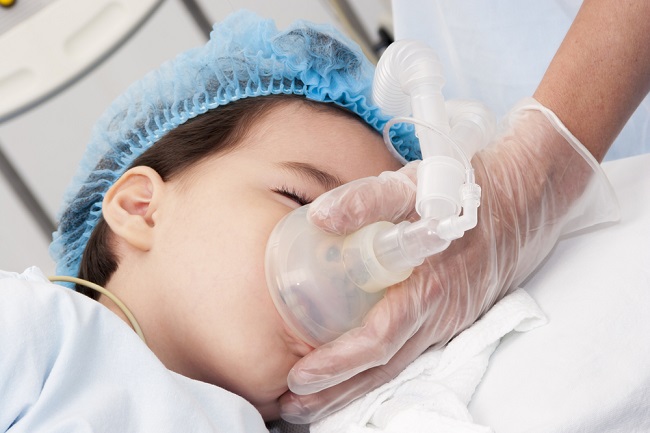Hepatitis D is inflammation of the hati due to infection virus delta hepatitis (HDV). This disease can only occur in someone who is also infected with virus hepatitis b (HBV).
Hepatitis D is an uncommon type of hepatitis. This is because this viral infection can only occur if a person has previously been infected with hepatitis B. Hepatitis D can be acute or chronic. A person can have hepatitis D at the same time as hepatitis B, or if he has long-term (chronic) hepatitis B.

Causes of Hepatitis D
Hepatitis D is caused by infection with the hepatitis delta virus (HDV). This virus is an incomplete type of virus and requires the help of the hepatitis B virus to develop. This viral infection will cause inflammation and liver damage.
The liver plays an important role in metabolism and filters toxic substances from the body. Inflammation of the liver will interfere with its function and cause various complaints or symptoms to appear.
The risk of developing hepatitis D will increase due to the following conditions:
- Have hepatitis B (including carrier or carrier)
- Having same-sex sex, especially with men
- Living with a person with or in an area where there is a hepatitis D outbreak
- Frequently receiving blood transfusions, especially if the donated blood does not go through a strict examination or the equipment used is not clean
- Using used syringes with hepatitis D sufferers, which usually occurs in injecting drug users
Although rare, childbirth can also be a means of transmitting hepatitis D from a mother who is positive for hepatitis D to her baby.
When already infected with HDV, a person will very easily spread it to others through direct contact with body fluids, such as blood, urine, vaginal fluids, or semen. In fact, the spread of the virus can occur before the sufferer experiences symptoms of the disease.
Even so, HDV is not spread through saliva or touch, for example hugging or shaking hands with sufferers.
Symptoms of Hepatitis D
Most cases of hepatitis D do not cause symptoms. When symptoms appear, the symptoms are similar to those of hepatitis B, so the two are difficult to distinguish. These symptoms can include:
- The skin and whites of the eyes turn yellow (jaundice)
- Joint pain
- Stomach pain
- Nausea and vomiting
- Decreased appetite
- Urine color becomes darker
- Stool color becomes brighter
- Unexplained fatigue
In rare cases, sufferers may also become dazed and bruise easily. The symptoms above generally only appear 21-45 days after a person is infected with hepatitis D.
The above symptoms are also more commonly experienced by people with acute hepatitis D (occurs suddenly). Patients with chronic hepatitis D (occurring gradually over a long period of time) often have no symptoms, except when their condition gets worse.
When to go to the doctor
Immediately consult a doctor if you experience the symptoms of hepatitis D mentioned above. Early treatment is needed so that the condition does not get worse and complications can be prevented.
You are also advised to see a doctor if you are at high risk for hepatitis D, for example because you already have hepatitis B or receive frequent blood transfusions.
If you have ever been diagnosed with hepatitis D, check with your doctor regularly to monitor your condition and prevent transmission of the disease.
Diagnosis of Hepatitis D
The doctor will ask for complaints and symptoms, medical history, and the patient's lifestyle. Next, the doctor performs a thorough physical examination, including seeing whether there is a change in skin color and the whites of the eyes turning yellow and swelling in the abdomen.
To confirm the diagnosis, the doctor will perform several supporting examinations, such as:
- Blood test, to detect infection and the presence of anti-hepatitis D antibodies in the blood which indicates the patient has been exposed to the HDV . virus
- Liver function tests, which measure the levels of protein, liver enzymes, and bilirubin which are the benchmarks for liver function and damage to these organs
- Liver biopsy, to check for damage to liver tissue in the laboratory
- Scans with ultrasound, CT scan, or MRI, to detect damage to the liver
Hepatitis D Treatment
Hepatitis D treatment aims to inhibit the proliferation of the hepatitis D virus (HDV), namely by:
Administration of interferon
Interferon is a drug derived from a type of protein that can stop the spread of the virus and prevent it from reappearing in the future. This drug is usually given by IV every week for 1 year.
Giving oantivirus bat
Antiviral drugs given include entecavir, tenofovir, and lamivudine. These drugs can boost the immune system to fight viruses and inhibit the virus' ability to damage the liver.
Liver transplant
If hepatitis D has caused severe liver damage, your doctor may suggest a liver transplant or replacement. Through this procedure, the damaged liver of hepatitis D sufferers will be replaced with healthy liver from a donor.
Complications of Hepatitis D
If not treated properly, hepatitis D can cause various complications, namely:
- Cirrhosis
- heart failure
- Heart cancer
Complications of hepatitis D are more common in patients with chronic hepatitis D than patients with acute hepatitis D.
Hepatitis D Prevention
The best way to prevent hepatitis D is to avoid factors that can increase your risk of developing hepatitis B, including:
- Get vaccinated against hepatitis B
- Practice safe sex, for example by using condoms and not changing partners
- Do not use drugs or share needles with others
- Do not share the use of toothbrushes and razors with others
- Use gloves when treating wounds, especially for medical staff
If you have been diagnosed with hepatitis B or hepatitis D, do regular check-ups with your doctor and don't donate blood so you don't pass the disease on to other people.









